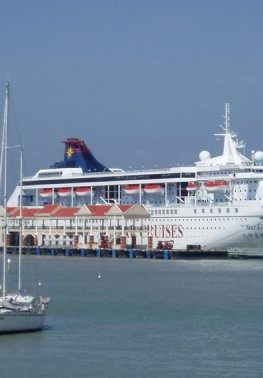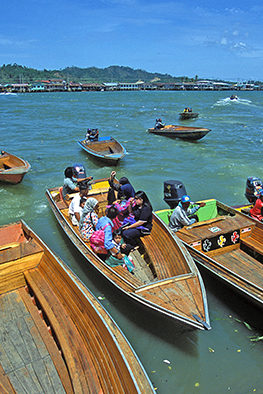Published on September 1, 2014
On Saturday, 30 August, Indonesia’s President Bambang Yudhoyono officialy opened the Chinese Hakka Indonesia Museum in the extensive Taman Mini Indonesia Indah park in East Jakarta. Also present were Chinese Ambassador to Indonesia, H.E. Xie Feng, First Lady Ani Yudhoyono, Minister for Education and Culture, Muhammah Nuh, and Minister for Tourism and Creative Economy, Mari Elka Pangestu, herself of Hakka descent.
On the occasion President Yudhoyono expressed his appreciation and thanks to the Hakka Indonesia descendents and community for their active participation and contribution to Indonesia,” this nation that we all love”, since the fight for Indonesia’s Independence to this very day. Yudhoyono specifically commended the Hakka’s characteristics for being hard working, persevering, unafraid and adaptive.
Head of the Hakka Indonesia Community, Sugeng Prananto, on his part stated that “the Hakka Indonesia descendents today form an inseparable part of the Indonesian nation and does not wish to be exclusive”. Through the construction of this Museum the Hakka Indonesia community wishes to remind the following generations that their forefathers had positive work ethos, were perseverent , honest and hard working, reports Kompas daily.
The Hakka, who belong to a subgroup of the Han in China began migrating around the 18th century. Many arrived here together with Admiral Zheng He (in Indonesia better known as Cheng Ho), and started to settle first along the north coast of Java and later to other island in the archipelago. The Hakka are the largest ethnic group here, comprising 40 percent of Chinese descendents in Indonesia.
The Hakka Indonesia Museum located in the Chinese Indonesia Cultural park in Taman Mini is a round building with a diameter of 45 meters, standing on 5,000 square meters of land, and consists of three floors. The round building replicates the traditional Tulou house of the Hakka in China.
The Museum follows the history of the migration of the Hakka to Indonesia, their active participation in the struggle for Independence of Indonesia and their contributions in her development through the ages.
Displayed are artifacts and heirlooms inherited from their forefathers who first came to these islands, their way of living, and their assimilation into the Indonesian community. Included are photographs of outstanding Hakka Indonesia personalities, among whom, badminton star Susi Susanti, film director Teguh Karya, Minister for Tourism and Creative Economy, Mari Elka Pangestu and Deputy Governor of Jakarta, Basuki Tjahaja Purnama, more popularly called Ahok.
Earlier, Sugeng Ananto explained that in 2012 the Chinese community was allocated 45,000 square meters in the compound of Taman Mini to build the Indonesian Chinese Cultural Park. Other constructions to be built here will be the grand entrance, a Chinese pagoda, a lake, a children recreation area and restaurants for the public.






